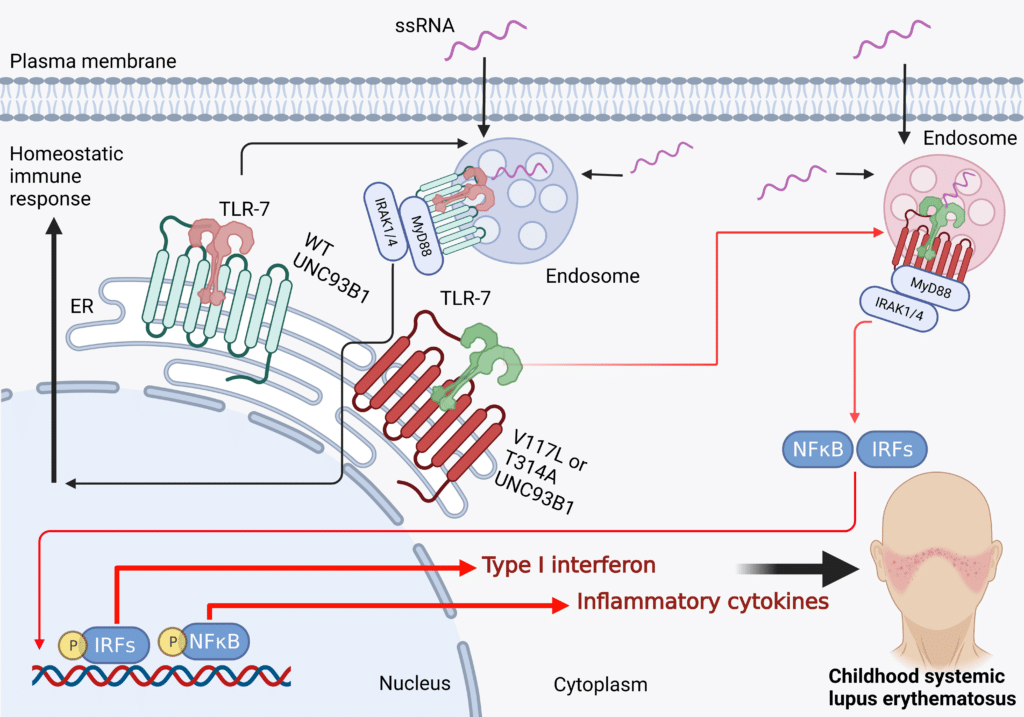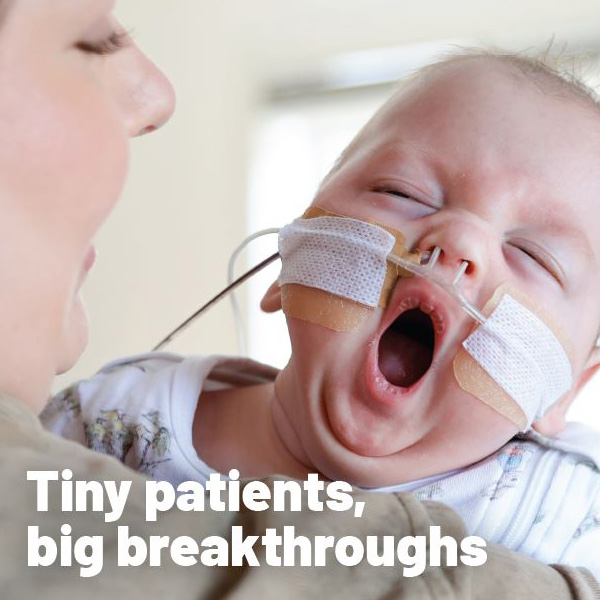Genetic changes identified as key to childhood lupus
By Rob Clancy, staff writer. Reviewed by Professor Seth Masters

Australian and Chinese researchers have jointly discovered a genetic key to the development of the devastating autoimmune condition childhood lupus.
In people with lupus the body’s immune system mistakenly attacks its own cells and tissues. Until now, its exact cause has been unknown, but it was thought to be a combination of genetic and environmental factors.
Key points
- A specific genetic variant has been identified as a key to the development of childhood-onset lupus.
- Understanding how the condition develops is a key to developing new treatments.
- Therapies targeting this gene should become available in the future, along with guidelines for their use.
Now Hudson Institute researcher Professor Seth Masters, working with colleagues at China’s Guangzhou Women and Children’s Medical Center, has identified a specific genetic variant which contributes to the development of childhood-onset lupus.
Prof Masters said the research, published in Nature Immunology, is a major breakthrough in understanding how the condition develops and, therefore, how it can be treated.
“We now know that some children develop lupus because of changes in their genes, and identifying these is very important to understand why they are sick, and how to best plan for the future,” he said.
Childhood lupus therapies in development
“Specifically, therapies that are targeting this gene should become available in the future, and it is important to know who should take them.”
“Variants in several genes can cause childhood-onset lupus, and ours is the first report of changes in a specific gene called UNC93B1,” Prof Masters said.
Childhood lupus, medically known as pediatric systemic lupus erythematosus (SLE), is a chronic autoimmune disease. It’s a complex condition that can affect various parts of the body.
It can impact the skin, joints, kidneys, heart, lungs, blood cells, and the brain with varying symptoms and severity, making it a complex and often misunderstood condition.
It is estimated that 15-20 per cent of all lupus cases are diagnosed in children and adolescents.

CHILDHOOD LUPUS FACTS
Differences between childhood and adult lupus
Childhood lupus often presents more severe symptoms than adult lupus. The disease tends to progress more rapidly in children.
In addition, children with lupus are more likely to experience organ damage. This includes damage to the kidneys, heart, and nervous system.
Childhood lupus symptoms
One common symptom is fatigue. Another common symptom is fever. This is usually unexplained by other illnesses.
Weight loss is also a frequent sign. It can occur even when the child’s diet hasn’t changed. Skin manifestations are common in lupus. The classic sign is a butterfly-shaped rash across the cheeks and nose. Joint pain and stiffness are also frequent and often resemble symptoms of arthritis.
Symptoms can be intermittent, they may come and go, and are often accompanied by periods of wellness.
Other possible symptoms include
- Hair loss
- Mouth ulcers
- Sensitivity to sunlight
- Swollen lymph nodes
- Chest pain
- Abdominal pain
- Neurological problems, such as seizures and psychosis
- Kidney problems, such as protein or blood in urine
- Heart problems, such as inflammation of the heart lining (pericarditis) or heart muscle (myocarditis)
- Blood disorders, such as anaemia, low white blood cell count, or low platelet count
- Eye problems, such as dry eyes or inflammation of the eye (uveitis).
Diagnosing childhood lupus
Diagnosing lupus in children can be challenging. This is due to the wide range of symptoms that can mimic other conditions.
Blood tests are often the first step. They can detect antibodies commonly found in lupus patients. Early detection is crucial. It allows for prompt treatment and better management of the disease.
Treatment options for childhood lupus
Treatment for childhood lupus is tailored to the child’s specific symptoms. The goal is to manage symptoms and prevent organ damage.
- Nonsteroidal anti-inflammatory drugs (NSAIDs) may be used to manage joint pain and inflammation
- Corticosteroids help reduce inflammation and suppress the immune system
- Immunosuppressants used in severe cases, help control the overactive immune system
- Antimalarial drugs are used to manage skin and joint symptoms.
A multidisciplinary approach is crucial in treating childhood lupus. It involves rheumatologists, nephrologists, and other specialists to provide comprehensive care.
Collaborators | Guangzhou Women and Children's Medical Center
Journal | Nature Immunology
Title | Two rare UNC93B1 variants contribute to childhood-onset lupus
View publication | https://doi.org/10.1038/s41590-024-01846-5
In this article
About Hudson Institute
Hudson Institute’ s research programs deliver in three areas of medical need – inflammation, cancer, women’s and newborn health. More
Hudson News
Get the inside view on discoveries and patient stories
“Thank you Hudson Institute researchers. Your work brings such hope to all women with ovarian cancer knowing that potentially women in the future won't have to go through what we have!”





